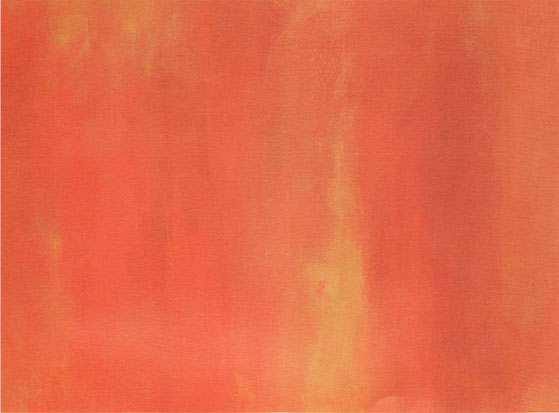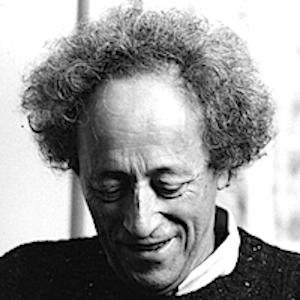
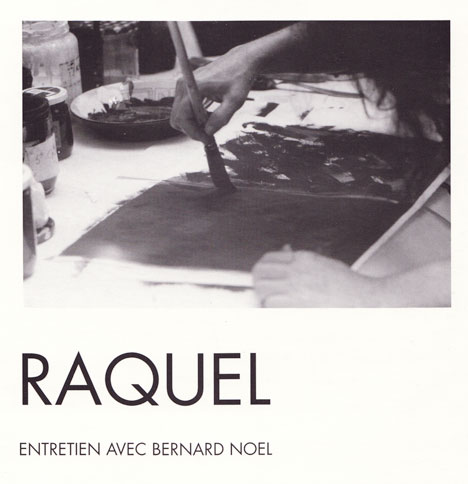
Raquel on the verge of..
This interview took place near the end of 1983 during a stopover between trains. lt is part of a narrative entitled A Winter's Journey which has remained in note form...
BN — Your painting, this “barely audible silence”...
Raquel — it's not yet daytime, not yet night-time, it's the moment between, of the in-between. ln the Talmud, if you manage to corner something, you dissect it, and end up with on explanation. O.K., that's final, it's clear! But yet, no, it's not that, not only that, and that's where the “in-between” is located...
BN — Would you care to explain this?
Raquel — I don't know. Painting is my way of questioning. And of answering as well. There's always much too much around. Must clear things away. Clear everything away that seems to have some sense but doesn't. I'm in search of this sense. As you well know, speech can only crop up once there's nothing left.
BN — Do you construct nothingness or that which follows?
Raquel — I eliminate. I create the conditions of nothingness, and in this nothingness I wait.
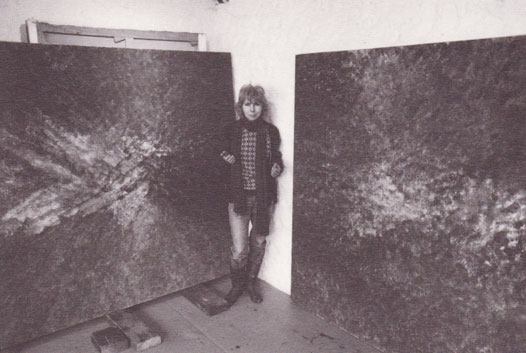
BN — For a change-over?
Raquel — Yes. And when I feel that it's coming, it's not in the form of painting but of sound. And it's the interplay between the two paintings that emits this. The diptych is harmony, the harmony foretelling something which isn't there.
BN — And when the painting is finished, has this something arrived?
Raquel — No, the painting is there so that this moment can be possible. On the verge of… We never have on answer. We're only there where it might occur. There's no certainty and no possibility of certainty. There's only a movement towards... Breathless, yet never reaching exhaustion. Everything is an opening towards other things…
BN — And the end; when does it come?
Raquel — It's that decisive brush stroke, that moment of tension, harmony. One additional stroke, and what you get is nothing, death. One gesture too many, and everything collapses.
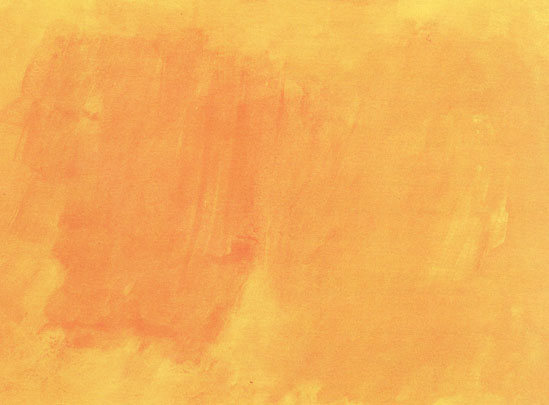
BN — What is there underneath, beneath the final surface?
Raquel — Many colours. But not always. For years, I forced myself to never leave a single trace on a painting. And now, I've just begun one that's all black, black and white, and you wouldn't believe the colours that appear.
BN — Colours or light?
Raquel — Light, but light is colour. There was a time when I painted with many colours, but then I wanted to see what I could do without any, yet still searching for the same intensity. It happened progressively. I eliminated some, then shifted to monochrome. With blacks, you can find a more intense light than with all other colours. I first eliminated the harmonies of colours, and limited myself to single colours, red, yellow, purple and yet monochrome. Blacks, if you‘re able to make the most of them, it explodes, irradiates.
BN — I presume that the black must be perfectly smooth?
Raquel — Yes, and it requires a particular disposition of the body. Gestural discipline. Especially when it concerns large paintings. From one end of the painting to the other, the gesture must maintain the same intensity. The slightest wavering of the hand or an uncontrolled breath caused an accident.
BN — Could you correct it?
Raquel — No. I’d spread some white over it when an accident did happen and start all over again.
BN — And the next gesture?
Raquel — It had to be made with the same intensity but aiso very swiftiy so that the iayer didn’t change in density
BN — What can you say about this physical technique?
Raquel — I went from dance to painting, and it seems to me that there was no rupture. Painting goes farther, that's all. When I'm working on large paintings, all my muscles are in action. I work on them standing up, on a ladder then I take them down and put them back up. I always have to think about space. There are times when I need to lay the painting on the ground, and for my hand to reach the centre of it, dance-like movements are required. Yes, a dance of the whole body
BN — So, what is the link between this technique and the act of painting?
Raquel — There is something more in painting, it opens up another dimension. It involves the body with something that goes further. It is also the transition from the physical to the subtle. in Jewish terms, the different degrees of the soul...
BN — What is the soul?
Raquel — It's on opening up towards the self.
BN — Where is this self located?
Raquel — Everywhere.
BN — Your painting is also a black mirror...
Raquel — There is one thing for certain, my painting doesn't allow itself to be seen. When someone enters, I see my paintings tarnish or open up. Their life is the eye's. They must be seen, one by one. In the case of the diptychs, one is enough. Probably because the experience of one isn't the experience of the other. Otherwise, one cancels the other.
BN — Would you agree, if I were to say that your paintings are ends that begin?
Raquel — Yes, it‘s a work of self-destruction but with the intent to construct. I don’t feel like I’m a painter. Beginning a new painting, the same anguish and helplessness return. The physical technique is no help since it’s a pan of myself. First there’s panic, then everything begins to move and I enter into forgetfulness. I forget everything and I’m completely inside. It's the moment when you are not aware of time, not aware of the cold. There's a law. There is always a law. You can do whatever you want, but according to the law. You don't know what it is but you sense it. Otherwise, everything collapses, in death. You know that you do as you like, and yet at the same time there is this law.
BN — ls work a bringing about of the law?
Raquel — Yes, you can say that. But the law can't be uttered or identified. It is a presence and it is also the present. Actually, the most difficult thing to achieve in the world is to live in the present. You're always worming your way forward or backward. That is where the strength of painting lies. Not rushing on as does literature, dance or music.
BN — Could you say that when you've completed the painting, this law is achieved?
Raquel – The law is never achieved. Otherwise, everything would just vanish into thin air. There would no longer be time. The present is what is, and time what is not. If the present were here in its absoluteness, everything would fall apart. That's what the black mirror is. The day that you are really in the present, everything disappears. There's a saying, if all the Jews observed the Sabbath at the same time, the Messiah would turn up. That is perhaps the present.
BN — The end of the world?
Raquel — Yes, of this world. The Messiah will take us into the next world. That one in which there is no longer any history. The world without time. The present.
BN — And can a painting be so powerful that it can hold this present?
Raquel — Perhaps... But would anyone be able to venture into it? And above all, maintain it…
